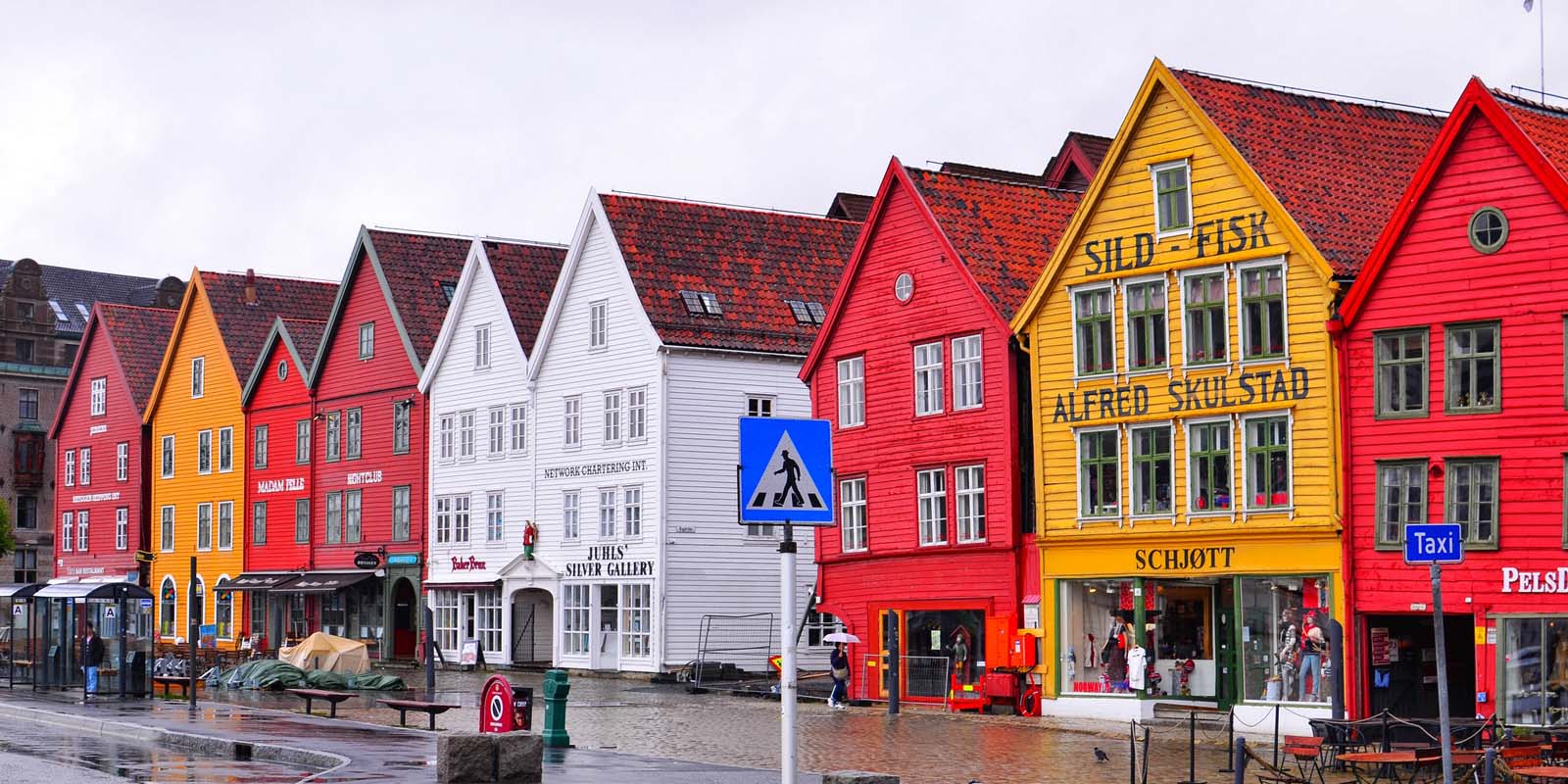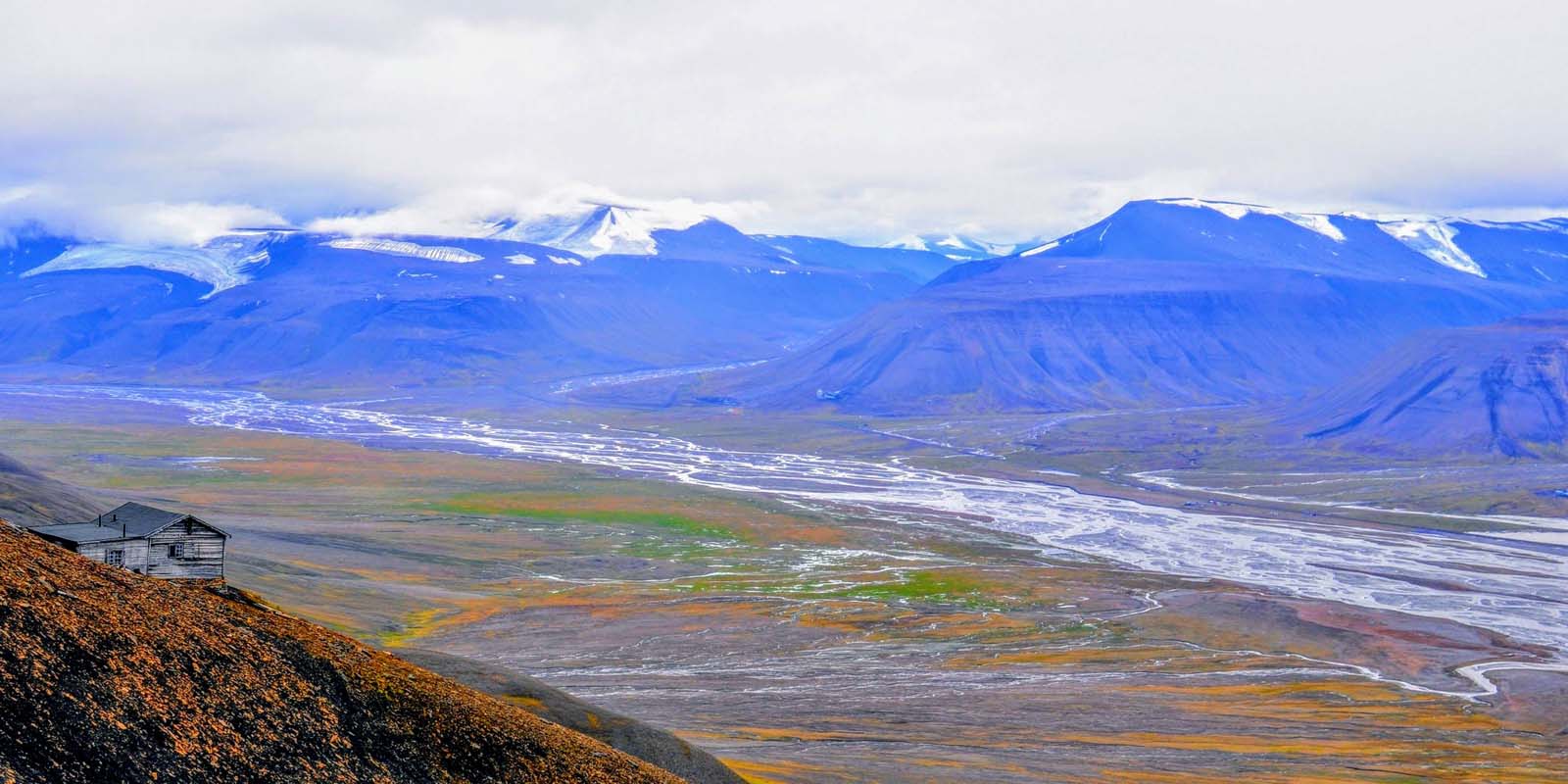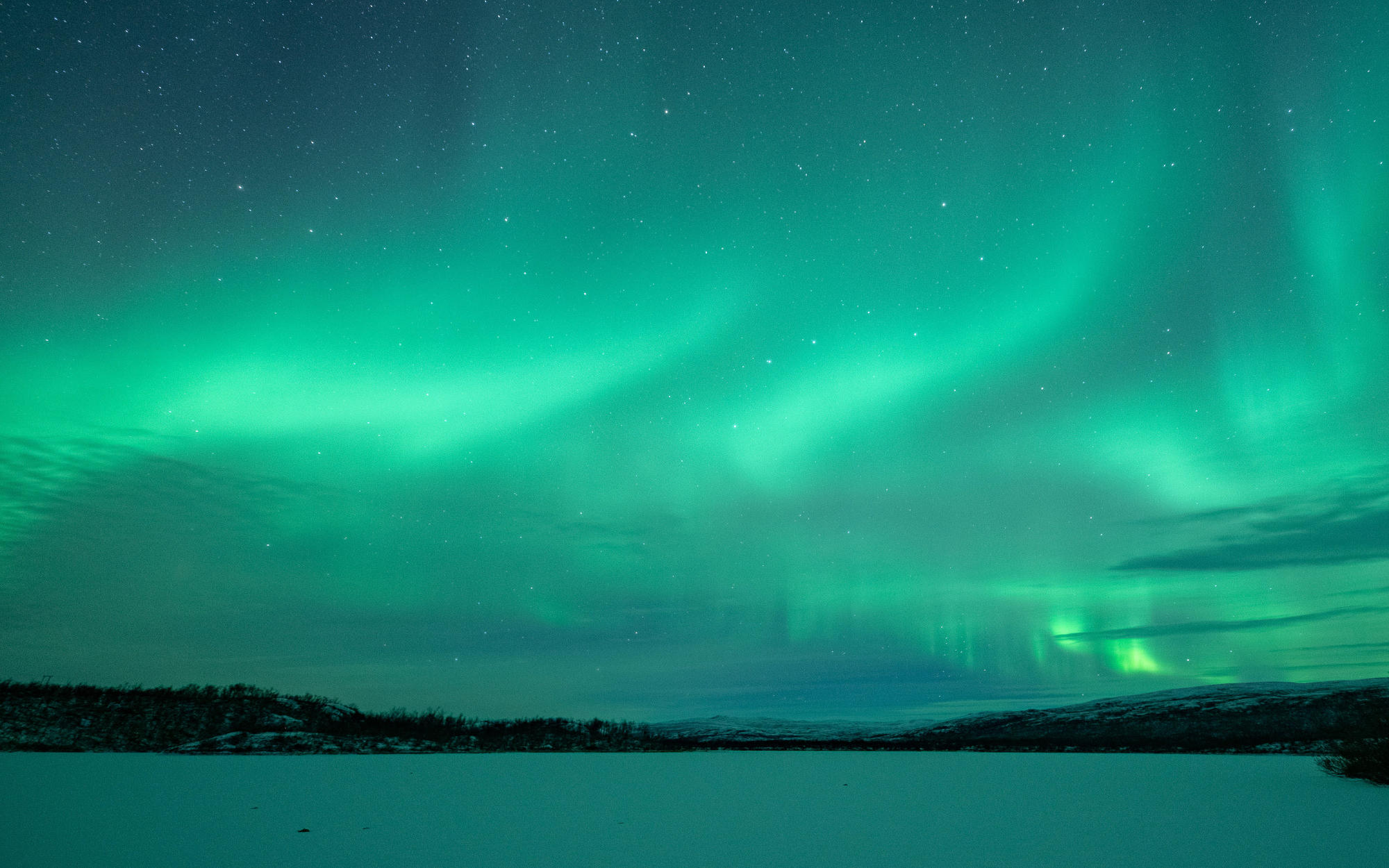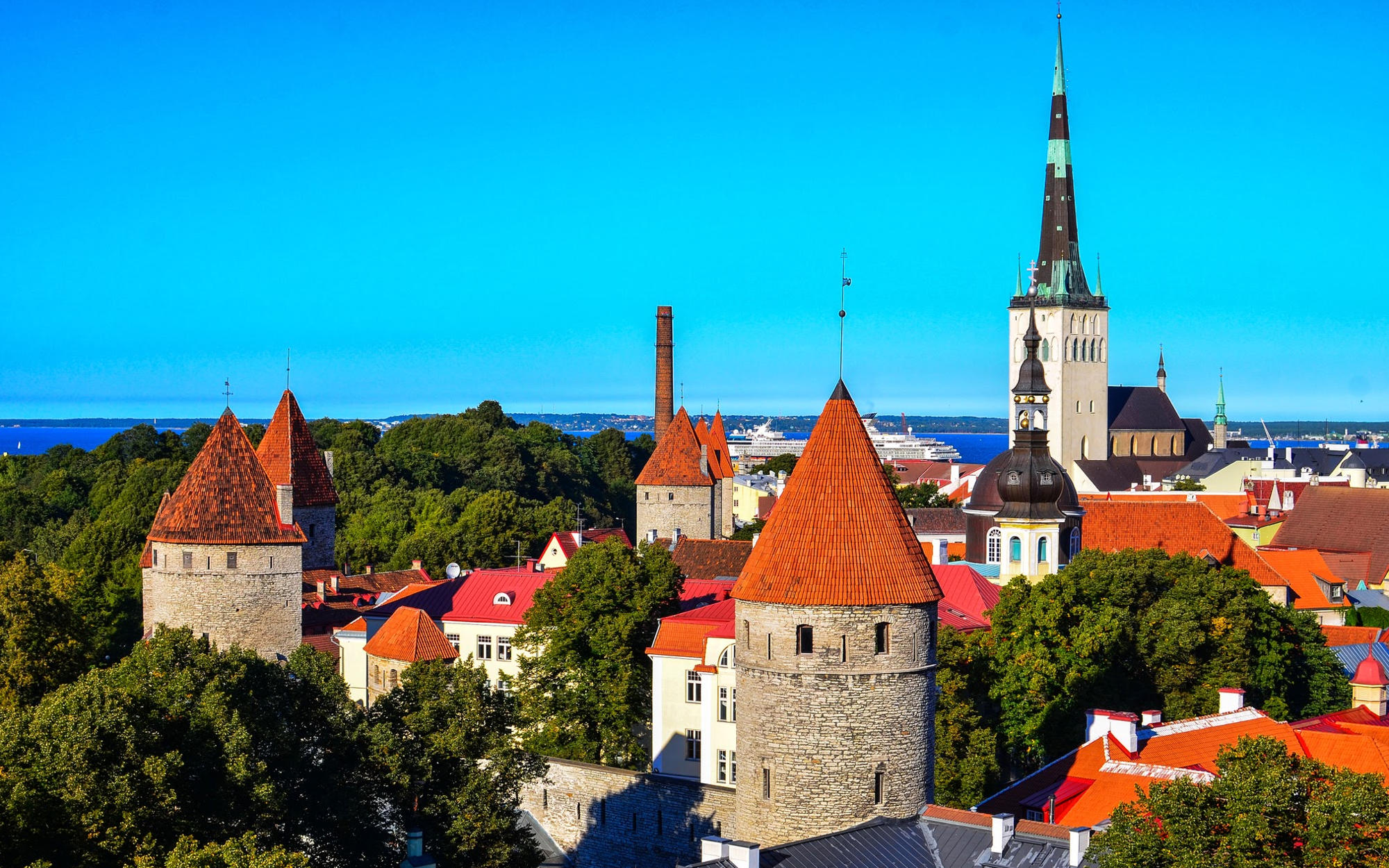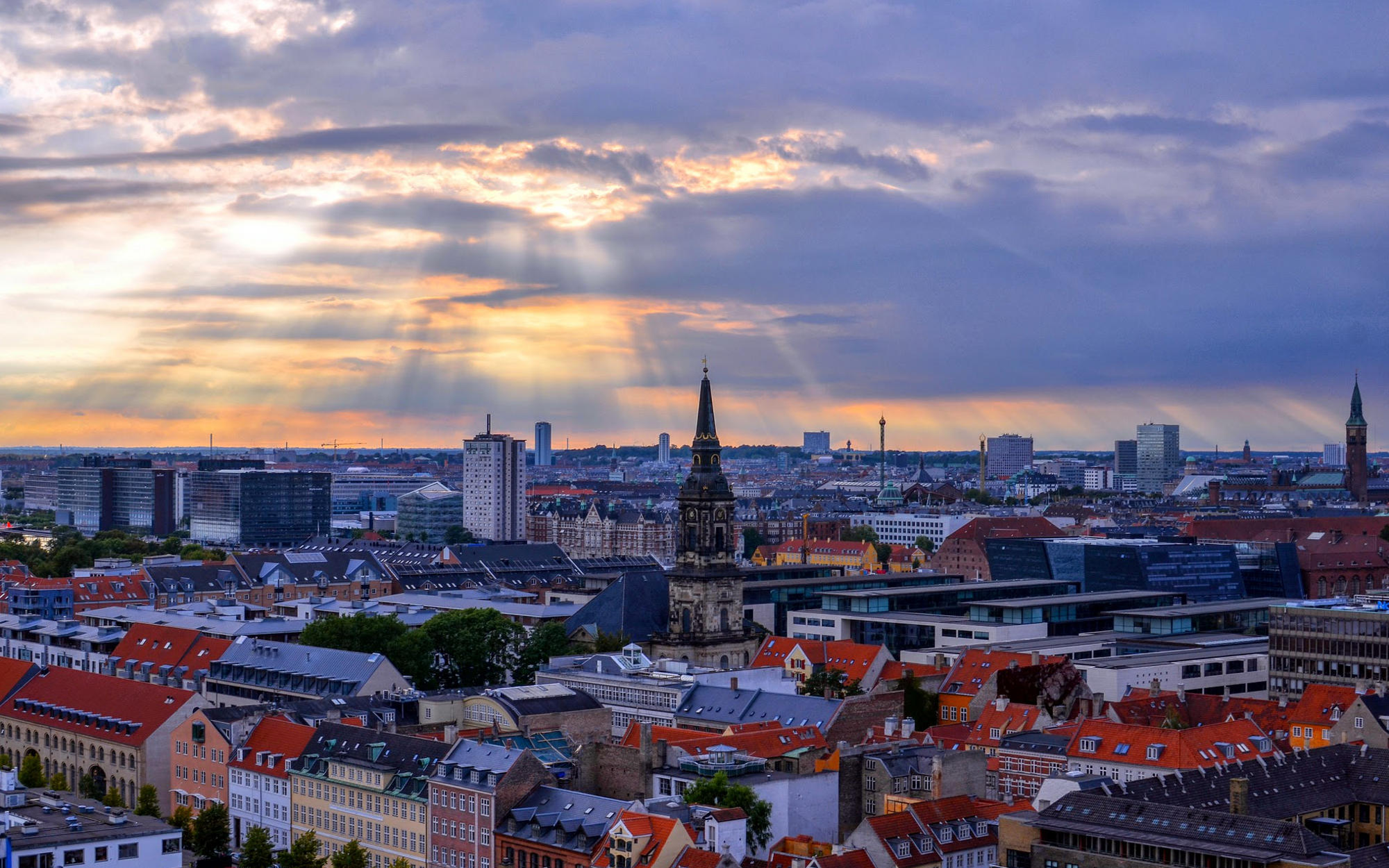This two-week trip will take you to most of the major cities of Scandinavia, including Oslo, Tallinn, Helsinki, Stockholm, and Copenhagen. You’ll also have an opportunity to explore the spectacular fjords in western Norway. However, this trip is more about history and culture than nature and the outdoors. Note that this trip relies entirely on trains, planes, ferries, and public transit, so you won’t need to rent a car. If you have more time, you might want to combine this trip with our Svalbard adventure or a trip to Iceland.
Length: 15 days. With extra time you may want to add an extra day onto each major city: Oslo, Stockholm, and Copenhagen as there is much to see.
Transport: This is a train based trip. See our Europe Train page for more information.
Recommended Guide book: Rick Steves Scandinavia
Day 1 – Bergen
- Fly into Bergen, Norway
- Walk around Bergen
- Nordnesparken
- Dinner — Café Opera
- Lodging — Klosterhagen Hotell (night 1/2)
Day 2 – Bergen
- Hanseatic Museum and Schøtstuene
- Bryggen (shops and waterfront)
- Rosenkrantz Tower (Rosenkrantztårnet)
- Håkon’s Hall
- Fløibanen
- Dinner — Naboen Pub & Restaurant
- Lodging — same place, (night 2/2)
Day 3 – Aurland
- Fjord1 express ferry from Bergen to Aurland
- Explore Aurland
- Dinner — Duehuset or cook at lodgings
- Lodging — Vangsgaarden Gjestgiveri (night 1/2)
Day 4 – Aurland and Flam
- Walk or hike in Aurland (consider visiting Stegastein viewpoint)
- Bus to Flåm
- Explore Flåm
- Fjord Zodiac Safari
- Dinner — Restaurant Arven or cook at lodgings
- Return to Aurland
- Lodging — same place, (night 2/2)
Day 5 – Oslo
- Flåm Railway to Myrdal (1h train)
- Train to Oslo (5h train)
- Self-guided walking tour of downtown Oslo
- Karl Johans gate
- City Hall
- Grand Hotel
- Parliament
- Royal Palace
- Cathedral
- Dinner — Engebret Cafe, Kolonihagen, Olivia, Grand Cafe, Sentralen, Solsiden, or for a major splurge Maaemo
- Drinks — Torggata Botaniske, Himkok, Territoriet
- Lodging — Hotel Bristol, Cochs Pensjonat, Hotel Verdandi Oslo (night 1/2)
Day 6 – Oslo
- Coffee at Tim Wendelboe or Fuglen
- Bygdøy Museums
- Norwegian Resistance Museum
- Drinks — Bar Boca, Bettola
- Dinner — pick one from the night before
- Lodging — same place, (night 2/2)
Day 7 – Oslo
- Grab breakfast at the bakery Apent
- Frogner Park
- National Gallery
- Museum of Science and Technology
- Munch Museum
- Late afternoon/early evening flight from Oslo to Tallinn
- Dinner — Leib
- Lodging — Rija Old Town Hotel, Hestia Hotel Barons, St Olav Hotel (night 1/2)
Day 8 – Tallinn
- Explore old town Tallinn
- Alexander Nevsky Cathedral
- Town Hall Square (Raekoja Plats)
- Danish King’s Garden
- Cathedral of Saint Mary the Virgin
- Saint Olaf’s Church
- St. Nicholas’s Church
- Dinner — Rataskaevu 16, Lee Restoran, Rado, Von Krahl Aed
- Drinks — Põrgu, Koht, Põhjala Brewery & Tap Room, Hell Hunt, or Uus Laine (live music)
- Lodging — same place, (night 2/2)
Day 9 – Helsinki
- LindaLine express ferry to Helsinki
- Walk the Esplanadi
- Lunch at Kappeli
- Old Market Hall
- Helsinki Cathedral
- Uspenski Cathedral
- Dinner — Strindberg or Kuurna
- Lodging — Hotel Rivoli Jardin (night 1/1)
Day 10 – Suomenlinna
- Suomenlinna
- Lunch – Restaurant Story
- Tram tour or Kulttuurisauna
- Overnight ferry to Stockholm (Tallink/Silja or Viking)
- Dinner – Smorgasboard onboard
- Stay on ferry
Day 11 – Stockholm
- Arrive Stockholm in the morning
- Skansen
- Lunch at Skansen
- Vasa Museum
- Optional addition: Abba Museum
- Dinner – nearby Oaxen Slip or choose from our Dining in Stockholm recs
- Drinks – Tweed or choose from our Dining in Stockholm recs
- Lodging – this apartment in Gamla Stan, Hotel Hornsgatan, Hotell & Värdshuset Clas på hörnet, Ett Hem, Miss Clara (or to save money, a 19th century boat, or a prison cell at Langholmen) (night 1/2)
Day 12 – Stockholm
- Drottningholm Palace
- Royal Canal Tour
- Royal Armoury
- Royal Treasury
- Walk around Gamla Stan – or book a historic walking tour
- Hot chocolate – Chokladkoppen
- Dinner — Kryp In, Den Gyldene Freden or choose from our Dining in Stockholm recs
- Drink – Icebar or choose from our Dining in Stockholm recs
- Lodging—same place, (night 2/2)
Day 13 – Copenhagen
- Train from Stockholm to Copenhagen (about 5 hours)
- Conditori La Glace confectionary shop
- Freetown Christiania
- Church of Our Saviour (Vor Frelsers Kirke)
- Optional addition – Little Mermaid Statue
- Drinks – Christianshavns Bådudlejning & Café or Kontiki Bar
- Dinner – Barr
- Lodging – Hotel Alexandra, Babette Guldsmeden, Hotel Danmark, Hotel SP34 – or stay on a boat CPH LIVING (night 1/3)
Day 14 – Copenhagen
- National Museum
- Christiansborg Palace
- Rosenborg Palace
- Tivoli Gardens
- Dinner at Tivoli Biergarten or Gemyse
- Lodging—same place, (night 2/3)
Day 15 – Roskilde
- Train to Roskilde (20m train ride)
- Roskilde Cathedral
- Viking Ship Museum
- Return to Copenhagen (20m train ride)
- Self-guided walking tour of Copenhagen and Nyhavn – Rick Steves or Fromer’s
- Dinner at Ristorante Italiano, Aamanns 1921, Bæst
- Drinks – Strøm Bar, Ørsted Ølbar (microbrews), Ved Stranden 10 (wine bar), Balderdash
- Lodging—same place, (night 3/3)
Day 16 – Fly Home
- Fly home from Copenhagen
Detailed Itinerary
Days 1-2 – Bergen
Fly into Bergen, Norway, and check in to your hotel. We stayed at the Klosterhagen Hotell and loved it; it’s a great location, the rooms are comfy, the complimentary breakfast is very good, and the location is excellent. Recover from your travel, or spend the afternoon walking around Bergen. Visit Nordnesparken, an idyllic park. If you’re there in the evening, you might be treated to a gorgeous sunset over the fjords. Grab dinner at Café Opera and then return to your hotel for the night.
The next day is your opportunity to explore Bergen. Be aware that Bergen has notoriously bad weather; it rained most of the day we were there, so you may have to do some walking through very wet streets. Visit Bryggen, the city’s picturesque wharf, which is lined with artisan shops. Stop by the Hanseatic Museum and Schøtstuene to learn about Bergen’s history, see the inside of a merchant’s home from the 18th century, and learn more about cod liver oil than you’ll ever want to know.
Stroll down the wharf and visit Rosenkrantz Tower (Rosenkrantztårnet) and Håkon’s Hall, two of Bergen’s most important historic sites. If it’s a nice day, ride the Fløibanen, a funicular that will take you to the top of Mount Fløyen for stunning views of Bergen. Get a nice dinner at Naboen Pub & Restaurant (we loved the halibut), and return to your hotel.
Days 3-4 – Western Fjords
In the morning, take the Fjord1 express ferry from Bergen to Aurland or Flåm; you can stay in either, but we liked Aurland better. Both towns are nestled on the side of the Sognefjorden among beautiful mountains. Aurland is quieter and less touristy, as Flåm is the stop for the massive cruise ships that ply the fjords. We highly recommend staying at the Vangsgaarden Gjestgiveri, a group of small cottages right on the water in Aurland. They’re small but cozy, and they have full kitchens, so you can cook for yourself.
The ride on the Fjord1 ferry is a way to get to your next destination, but it’s also a great activity itself. You’ll cruise through Norway’s beautiful western fjords. We recommend going out on deck frequently for the incredible views; it was cold when we took the trip, so we couldn’t stay outside for too long, but the sights were worth it.
Once you get to Aurland, wander around the quaint town. Check out Merete Rein Art Glass, the workshop and store for a local glass blower. The wares are beautiful, and there are frequent glass-blowing demonstrations. Stop by Vangen Kyrkje, the church in town, which is small but pretty with a beautiful graveyard. For dinner you can go out or cook at your lodging. If you go out, we recommend Duehuset. Or grab some groceries at the store in town, and cook yourself dinner as you soak the views of the fjords.
Spend the next morning walking or hiking around Aurland. If you can, try to make your way to Stegastein Viewpoint. It’s a bit far to walk from town (about five miles along a road), but the views are absolutely stunning, and you can book a bus from Flåm. Return to Flåm, either on your tour bus or on a shuttle bus or ferry. Walk around the town of Flåm and the nearby farms. From Flåm, embark on your Fjord Zodiac Safari. You’ll fly through the stunning Aurlandsfjord and Nærøyfjord, see countless waterfalls, and learn about the towns and wildlife of Norway’s fjord region. Either get dinner in Flåm at Restaurant Arven or cook for yourself.
Days 5-7 – Oslo
Ride the Flåm Railway, a world-famous journey up the sides of the Sognefjorden to the mountain town of Myrdal. From Myrdal, catch a train into Oslo, which will take 4.5-5 hours. Though not quite as picturesque as the ride to Myrdal, the train to Oslo also offers some great views of the Norwegian mountains and countryside. When you get to Oslo, check into your lodgings. Consider Hotel Bristol, Cochs Pensjonat, or Hotel Verdandi Oslo, though airbnb can also be a viable option.
Once you’re settled in Oslo, take yourself on a walking tour of the city. Stroll down Karl Johans Gate (Oslo’s main street), and see City Hall (where the Nobel Peace Prize is awarded each year), the Grand Hotel (where the Nobel peace laureates stay) the parliament building, the harbor, Oslo Cathedral, and the royal palace.
For dinner, Oslo has great restaurants. But be forewarned, as all of Scandinavia, the food is astronomically expensive. That being said some great restaurants include Engebret Cafe, Kolonihagen, Olivia, Grand Cafe, Sentralen, Solsiden, or for a major splurge Maaemo. However, if you’re staying somewhere with a kitchen, you might want to cook, to save some cost.
For drinks after dinner, head to cocktail specialties Torggata Botaniske or Himkok, or a great wine bar Territoriet.
The next day will be your Oslo museum day. Oslo’s museums (like most everything in the city) tend to be expensive, so you should consider buying the Oslo Pass, which will get you into over 30 museums and trips on all of Oslo’s public transit for a single upfront price (this should save you a lot of money). Start by taking the ferry from Oslo harbor out to Bygdøy, a peninsula covered in beautiful upscale neighborhoods and boasting several great museums. If you want (and if it’s a nice day), spend some time roaming the neighborhoods before you visit the museums.
For coffee before you start, head to the famous Tim Wendelboe.
Start at Norsk Folkemuseum, Norway’s open-air folk museum, which contains buildings from throughout Norway’s history. The highlights include a stave church dating to the 1200s and old farmhouses and schoolhouses with soil and grass roofs. The museum is great, but don’t feel like you have to spend a ton of time here; the folk museum in Stockholm has similar attractions, but it’s bigger and better.
Next, visit the Viking Ship Museum (Vikingskipshuset), which contains three ships built during the eighth century. The ships were used as tombs, so they were buried with numerous gifts. Two of the ships are remarkably well-preserved—almost completely intact—while one is missing about half its structure.
Your last stop on Bygdøy is the Fram Museum, one of our favorite museums in the world. The main attraction is the Fram itself, a wooden ship designed to explorer Fridtjof Nansen’s specifications specifically for arctic exploration. In addition to the ship, the museum contains neat exhibits on several polar explorers, their expeditions, and polar exploration in general. In an annex, the museum houses the Gjøa, the first ship to transit the Northwest Passage.
Take the ferry back to the Oslo harbor. The Nobel Peace Center is nearby, but we don’t think it’s worth your time. The exhibit on the current winner is mildly interesting, but the museum is poorly designed and quite boring. If you’re really interested in the Nobel Peace Prize and have the Oslo Pass (the Nobel Peace Center is included), you may want to stop by, but absolutely do not pay to visit.
Instead, we recommend you visit the Norway Resistance Museum, a less well-known but fascinating museum that tells the story of the Norwegian resistance to German occupation during World War II.
For dinner, pick an option you didn’t try the night before. For after dinner drinks try Bar Boca or Bettola.
If your trip needs to be shorter you can cut out the next day and simply fly to Tallinn in the morning. However, given the size of Oslo, we recommend spending another day enjoying the museums and beautiful park.
The next morning, head to the bakery Apent for breakfast.
Next make your way to Frogner Park (Frognerparken), a 75-acre park containing a unique collection of statues created by Gustav Vigeland and 14,000 roses (and the most visited attraction in Norway). If you’re not into museums and it’s a nice day, you may want to spend most of the day strolling through the park and picnicking; it’s beautiful, and a short visit won’t do it justice.
In the afternoon you can visit a few more of the city’s fantastic museums. The National Gallery is an excellent art museum, but it’s closed until 2020 for relocation to a new space. The Museum of Science and Technology is a great interactive museum with a lot of original technologic advances. The Munch Museum has a fantastic collection of Munch’s most famous works (though not The Scream which is at the National Gallery).
Catch a flight in the late afternoon or early evening from Oslo to Tallinn, Estonia (about an hour and a half). We stayed at the Tallink Express, which we absolutely do not recommend. It’s dirty, and the breakfast is mobbed by rude tourists who visit Tallinn on buses. We stayed there on a recommendation from Rick Steves, who normally does a fantastic job. But this recommendation missed the mark badly. Spend a little more money and stay in Tallinn’s quaint old town. Consider Rija Old Town Hotel, Hestia Hotel Barons, St Olav Hotel.
Day 8 – Tallinn
Spend the day walking through Tallinn’s beautiful old town and exploring the shops, bakeries, and churches, including Alexander Nevsky Cathedral, Holy Spirit Church (Püha Vaimu kogudus), Cathedral of Saint Mary the Virgin, Saint Olaf’s Church, St. Nicholas’s Church, Town Hall Square (Raekoja Plats), and the Danish King’s Garden. Be sure to walk up to the Patkuli Viewing Platform for a picturesque overlook of Tallinn. Tallinn is known for its amber, so you may also want to visit some of the many local artisans selling amber wares.
Get dinner at Leib, Rataskaevu 16, Lee Restoran, Rado, or Von Krahl Aed. You might be tempted by Olde Hansa right in the old town square. This place has a medieval atmosphere (period clothing, dining by candlelight, and offering up “a decent bowl of elk soup” – yes, that’s the sign we saw outside), and while the food and drinks are good, it’s extremely touristy. After dinner, stroll back up to Patkuli for awesome views of the city at night. Finish your evening with a stop at Koht, Põhjala Brewery & Tap Room, or Hell Hunt for Estonian beer and or head further out to or Uus Laine for live music. The Baltics are well-known for their craft beer scene and you can’t leave without trying one.
Day 9-10 – Helsinki
In the morning, catch the LindaLine express ferry to Helsinki (about two hours). Check into your lodgings and drop off your bags; the Hotel Rivoli Jardin is wonderful. Then explore Helsinki on foot. Helsinki is a charming city with a laid-back atmosphere, beautiful architecture (think Scandinavian blended with art-nouveau), and a lively market all set on the Baltic sea.
Stroll along the Park Esplanadi, a beautiful tree-lined park bracketed by shops and restaurants. Grab lunch or coffee at Kappeli and check out the Old Market Hall. Walk up to Senate Square and see Helsinki Cathedral and Uspenski Cathedral. If you’re interested, you may want to visit Stockmann’s department store, Finland’s Harrods (it’s enormous and takes up an entire city block). Get dinner at Strindberg.
The next morning, take the ferry out to Suomenlinna, a fortress set on six islands in the Baltic Sea near Helsinki. The fortress was built in 1748 to defend against Russian aggression. Today, you can still see the walls and canon from the fortress, and the islands are dotted with interesting shops. If it’s a nice day, plan to spend a few hours here (and consider a picnic lunch versus eating at Restaurant Story when you return to the mainland). The walk from the ferry dock to the King’s Gate and back is a nice and easy stroll. When you return to the mainland, you may want to take the tram tour of the city. We didn’t think it added a whole lot, especially after the walking tour the day before. Another option would to be to head to one of the public saunas, Kulttuurisauna, where after sweating in steam you can climb a later down into the sea. A final option would be to continue to wander, checking out shops like Papershop, Kauniste, and Liike or visit the Kamppi Chapel of Silence, the City Museum, or the Helsinki University Botanical Gardens.
In the evening, take the overnight passenger ferry (it’s more like a massive cruise ship) to Stockholm. Your primary options are the Tallink/Silja line and Viking line. Viking has a reputation as the party cruise. We took Tallink/Silja and really enjoyed it, though do not book a stateroom without a window. They’re the cheapest option and will save you some money, but they’re below the car decks, so when the ship stops in the middle of the night you’ll be woken up as they unload the vehicles. Spend some extra money and get a room with a view. We also recommend chipping in for the all-you-can-eat-and-drink smörgåsbord for dinner; in addition to the traditional Scandinavian fare (mostly herring in various…let’s say “interesting”…forms), there should be plenty of food options for everyone (and unlimited alcohol while you’re seated).
Days 11-12 – Stockholm
Your ferry will arrive in Stockholm in the morning. If it’s too early to check into your lodgings, you may want to store your bags at a locker in the train station. Hotels in Stockholm are expensive! In general, staying in Gamla Stan (the old town) is a good bet, or within walking distance of the old town. Consider this airbnb or this apartment in Gamla Stan, or Hotel Hornsgatan or Hotell & Värdshuset Clas på hörnet, Ett Hem, or Miss Clara also conveniently located. Our friend from Sweden also highly recommends this hostel on a 19th century boat which offers a reasonably priced twin private room, or hotel/hostel Langholmen, located in an old prison if you want the highly unique experience of staying in a prison.
You’ll want to buy the Stockholm Pass, which (like the Oslo Pass) will get you into most major museums and on public transit for a single fee that should save you a lot. Take the tram out to Skansen, Stockholm’s fantastic open-air folk museum with buildings from throughout Swedish history and living history interpreters who will tell you all about the buildings and life in Sweden from different eras. There’s also a good zoo with animals from all across Scandinavia.
Be sure to see the Vasa Museum. It’s a museum containing the Vasa, a wooden ship from the 17th century that sank near Stockholm about twenty minutes into her maiden voyage. The ship itself is remarkable, and there are interesting exhibits about shipbuilding, exploration, and life at sea.
The ABBA museum is nearby. While you may only want to visit if you enjoy ABBA (and honestly, who doesn’t?!), it’s a highly entertaining museum with the tagline “Walk in, Dance out” with tons of memorabilia for an overall sensory-overloaded experience.
For dinner, you can stay nearby, eating at Oaxen Slip. If you want to be closer to your accommodation check out our Dining in Stockholm recs. Dining in Stockholm is expensive. If you can cook, you may want to, or consider grabbing a hotdog or kabob from a stand. However, Stockholm is also an incredibly foodie city with lots of fantastic options, so it’s worth splurging at least one night.
For after dinner drinks, check out Tweed, a cute bar tucked away in Gamla Stan. It’s reminiscent of an early 20th century gentlemen’s bar and features a cocktail list that’s naval-themed.
In the morning, take the subway out to Drottningholm Palace, Sweden’s Versailles (about 40 minutes via subway). Take a guided tour and walk through the gardens. Next, take the Royal Canal Tour, a boat ride along the Royal Canal that will give you great views of the city as well as interesting historical information. Check out the Royal Armoury (Livrustkammaren) and Royal Treasury (Skattkammaren). Grab a hot chocolate at Chokladkoppen and then take a self guided walk around Gamla Stan, a neat historic neighborhood. If you prefer you can also book a historic walking tour of the neighborhood.
If you’re in the mood for happy hour, grab drinks at Vapiano Stockholm (an Italian chain in Gamla Stan with the cheapest drinks we were able to find in the city). For dinner, stay in Gamla Stan at Kryp In or Den Gyldene Freden or choose from our Dining in Stockholm recs
After dinner, consider a gimmicky visit the Icebar Stockholm.
Days 13 – 15: Copenhagen and Roskilde
Take the train from Stockholm to Copenhagen (about 5 hours). Cophenhagen, Denmark is a magical yet laid-back city. It hosts the amazing and extremely charming Tivoli Gardens, beautiful palaces, a bohemian refuge, tons of great parks, restaurants, and a beautiful waterfront.
Check into your lodgings. Consider Hotel Alexandra, Babette Guldsmeden, Hotel Danmark, Hotel SP34 , or if you’re feeling adventurous, stay on a moored boat at CPH LIVING. Airbnb or an apartment rental is also a great idea as you’ll be here for 3 nights. If possible, pick a hotel within the City Center neighborhood for easy walking access to most sites.
Grab a sweet bite to eat and a coffee at Copenhagen’s most famous confectionary shop Conditori La Glace. Then take the bus, metro, or walk (20 minutes) out to Christianshavn (walking only adds about 6 minutes onto the route). Visit the Church of Our Saviour (Vor Frelsers Kirke) and climb the spire for incredible views of the city. Walk another three minutes or so to Freetown Christiania, an independent commune which is extremely fun to wander through. If you’re longing to see the Little Mermaid Statue, now’s your chance. It’s sort of a pain to get to and extremely touristed, but if you love Hans Christian Anderson and need the photo for your instagram, head out there.
If instead you’re done with touring for the day, grab pre-dinner drinks at nearby Christianshavns Bådudlejning & Café or Kontiki Bar and then head to dinner at nearby Barr.
Start the next day at the National Museum of Denmark (Nationalmuseet), which has a huge exhibit on Danish prehistory, beginning with the Stone Age and continuing through the Renaissance. Then stop by Christiansborg Palace. Grab lunch back at your lodgings, or pick something up in town. After lunch, visit Rosenborg Palace. See the interior and be sure to go downstairs to see the crown jewels.
Spend the afternoon/evening at Tivoli Gardens, the world’s second-oldest amusement park and the inspiration for Disneyland. It’s charming and old-world feeling in a way Disneyland can’t manage. Spend the evening enjoying the rides; be sure to ride the Star Flyer for great views of the city (we did it both before and after sunset). Even if you choose not to ride (which we think would be a mistake), it’s a fun place to wander, especially at night when it’s lit up. Eat dinner at Tivoli Biergarten, which has surprisingly good food and tasty beers or opt for fancier farm-to-table Gemyse. Though Tivoli is usually open pretty late, be aware that most of the rides will begin to shut down around an hour before the park closes if you’re there on a weeknight, so plan accordingly.
In the morning, take the train from Copenhagen to Roskilde (about 20 mintues). Walk around town and visit Roskilde Cathedral. It dates to the 1100s and is the final resting place of 40 Danish monarchs; we thought it was the most impressive and beautiful church in Scandinavia. Then go to the Viking Ship Museum (Vikingeskibsmuseet). Somewhat similar to its counterpart in Oslo, the museum in Roskilde has five ships in varying states of completion. There are exhibits on Viking life and shipbuilding, and a workshop where experts restore ships and build complete Viking ships. You can journey out onto the Baltic Sea in one of the modern recreations, which we thought was a lot of fun.
Take the train back to Copenhagen. Walk around town or see any museums or sites you haven’t visited yet. Rick Steves Scandinavia offers a great self-guided walking tour which includes Nyhavn. Another self-guided tour idea is Fromer’s (both tours 1 and 2 have areas you have not yet visited, though skip what you’ve already seen). Dinner options include Aamanns 1921, Bæst, or mix it up with Italian at Ristorante Italiano. After dinner if you want to grab a drink, get a cocktail at Strøm Bar or Balderdash, a beer at Ørsted Ølbar, or wine at Ved Stranden 10.
Enjoy your last night in Copenhagen, then fly home the next day.

